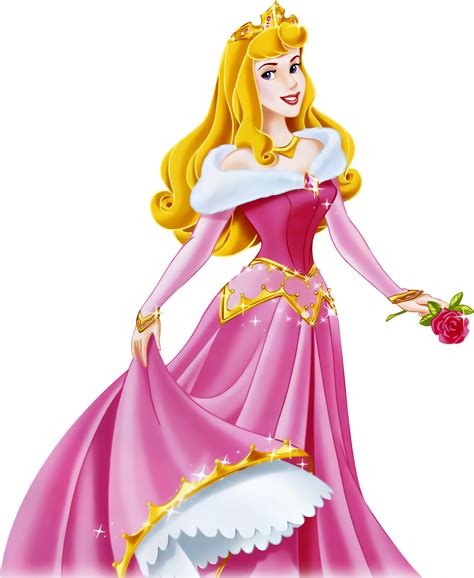The enchanting tale of Princess Aurora, famously known as Sleeping Beauty, has captivated the hearts of people around the world for centuries. This timeless story, born from the imagination of Charles Perrault and the Brothers Grimm, has been retold and reimagined in countless ways, yet its essence remains as magical and intriguing as ever. At the core of this narrative is the beautiful Princess Aurora, a character whose fate is intertwined with a curse that leads to a hundred-year sleep, awaiting the kiss of true love to awaken her.
The Birth of a Legend
The story begins with the celebration of Princess Aurora’s birth, where she is blessed by three good fairies, Flora, Fauna, and Merryweather, with the gifts of beauty, song, and dance. However, their joy is short-lived, as the uninvited fairy, Maleficent, casts a curse upon the princess, declaring that on her sixteenth birthday, Aurora will prick her finger on a spinning wheel and fall into a deep, eternal sleep. Though the good fairies cannot undo the curse, they manage to soften it, ensuring that instead of death, Aurora will fall into a deep sleep, from which she can be awakened by true love’s kiss.
The Curse and the Sleep
As the years pass, Aurora grows into a kind and gentle soul, beloved by all in the kingdom. Unaware of the danger that awaits her, she lives a sheltered life, until the fateful day of her sixteenth birthday. Despite the precautions taken by her parents, the King and Queen, Aurora encounters an old spinning wheel in the abandoned part of the castle, where she pricks her finger, fulfilling the curse. The entire kingdom falls into a deep sleep along with her, trapped in a magical slumber that seems impossible to break.
The Quest for True Love’s Kiss
The story then shifts to Prince Philip, who, upon hearing the tale of the beautiful princess asleep in the castle, decides to rescue her. His journey is not an easy one, as he must battle the obstacles set by Maleficent, including a forest filled with thorns and the transformation of the evil fairy into a dragon. With courage and determination, Prince Philip reaches the castle, fights off Maleficent, and finds Aurora. With a kiss, he breaks the curse, awakening not only the princess but the entire kingdom from their long, magical sleep.
The Union of True Love
Following their awakening, Aurora and Prince Philip fall deeply in love, and their union is celebrated with grandeur. They marry, and the story concludes with the triumphant note of true love conquering all, even the darkest of magics. The tale of Sleeping Beauty has been a beacon of hope, reinforcing the belief in the transformative power of love and the idea that even in the darkest of times, there is always a chance for happiness and redemption.
Comparative Analysis: Versions of Sleeping Beauty
Over the years, the story of Sleeping Beauty has undergone numerous adaptations and interpretations, each bringing a unique perspective to the classic tale. From the original fairy tales by Perrault and the Grimm brothers to the beloved Disney animation and various stage productions, the core elements of the story remain intact, yet each version offers distinct insights into the characters and their motivations.
The Original Fairy Tales: The earliest published versions of Sleeping Beauty, such as “La Belle au Bois Dormant” by Charles Perrault and “Little Briar-Rose” by the Brothers Grimm, present a darker, more sinister narrative. These stories include elements such as the prince’s mother being an ogress who tries to eat Aurora and her children, highlighting the brutal nature of fairy tales before they were adapted for children.
Disney’s Sleeping Beauty: The 1959 Disney animated film brings a softer, more family-friendly approach to the story. It introduces memorable characters like the three good fairies and expands on the romance between Aurora and Prince Philip, making it a timeless classic for children and adults alike.
Stage Productions: Ballets and musicals based on Sleeping Beauty offer a blend of music, dance, and drama, interpreting the story in visually stunning and emotionally engaging ways. These productions often delve deeper into the characters’ emotional journeys, exploring the themes of love, sacrifice, and the battle between good and evil.
Historical Evolution of the Story
The evolution of Sleeping Beauty over time reflects not only changes in societal values and storytelling preferences but also the adaptability of the tale to different mediums and audiences. From its origins in medieval folklore to its current status as a global phenomenon, the story has captivated imaginations, inspired countless adaptations, and remains a powerful symbol of the enduring power of true love.
Expert Insight: Psychological Perspectives
Psychologically, the story of Sleeping Beauty can be seen as a metaphor for the transition from adolescence to adulthood, with the sleep symbolizing a state of innocence and the awakening representing the transition into maturity and sexual awareness. The curse can be viewed as the societal pressures and expectations placed on individuals, particularly women, while the rescue by Prince Philip may symbolize the traditional notion of men as saviors. However, modern interpretations often emphasize Aurora’s agency and the story as a tale of personal empowerment and the quest for one’s true identity.
Future Trends Projection: The Enduring Appeal of Sleeping Beauty
As media and storytelling continue to evolve, the tale of Sleeping Beauty is likely to remain a staple of popular culture. Its themes of love, perseverance, and the struggle between good and evil are timeless, offering a foundation that can be reinterpreted and reimagined in countless ways. Future adaptations may explore deeper character developments, offer alternative perspectives on traditional roles, and incorporate modern themes and technologies, ensuring the story remains relevant and captivating for new generations.
Decision Framework: Choosing the Right Adaptation
For those looking to engage with the story of Sleeping Beauty, whether through reading, watching, or attending a performance, choosing the right adaptation can be overwhelming given the multitude of options. A decision framework might consider the following factors: - Target Audience: Is the adaptation intended for children, adults, or a general audience? - Preferred Medium: Are you interested in reading a book, watching a film, or experiencing a live performance? - Tone: Do you prefer a lighter, more comedic take or a darker, more dramatic interpretation? - Theme Focus: Are you interested in adaptations that emphasize traditional values or those that offer modern, empowered reinterpretations of the characters?
Conclusion
The story of Sleeping Beauty, with its captivating narrative of love, magic, and the battle between good and evil, continues to enchant audiences worldwide. Its evolution over time, from dark fairy tale to beloved Disney classic and beyond, is a testament to the power of storytelling and the human imagination. As a cultural icon, Sleeping Beauty inspires new adaptations, interpretations, and reflections, ensuring its place in the hearts of people for generations to come.
FAQ Section
What is the origin of the Sleeping Beauty story?
+The origins of Sleeping Beauty can be found in medieval folklore, with the most well-known versions being published by Charles Perrault as “La Belle au Bois Dormant” and by the Brothers Grimm as “Little Briar-Rose”.
What are the main differences between the original fairy tales and Disney’s Sleeping Beauty?
+Disney’s adaptation of Sleeping Beauty significantly softens the story, removing darker elements such as the attempt by the prince’s mother to eat Aurora and her children, found in the original fairy tales. It also focuses more on the romance and introduces the three good fairies as main characters.
What symbolic interpretations can be made of the story of Sleeping Beauty?
+The story can be interpreted as a metaphor for the transition from adolescence to adulthood, with the sleep symbolizing innocence and the awakening representing maturity. The curse and rescue can also be seen as symbolic of societal pressures and the traditional roles of men and women.
Why does the story of Sleeping Beauty remain so popular across different cultures and time periods?
+The story’s enduring popularity can be attributed to its universal themes of love, the struggle between good and evil, and personal empowerment. The adaptability of the tale to different mediums and interpretations has also contributed to its timeless appeal.
What can be expected from future adaptations of Sleeping Beauty?
+Future adaptations are likely to incorporate modern themes, deeper character developments, and alternative perspectives on traditional roles. The story will continue to evolve, offering fresh insights and interpretations that cater to diverse audiences and preferences.



